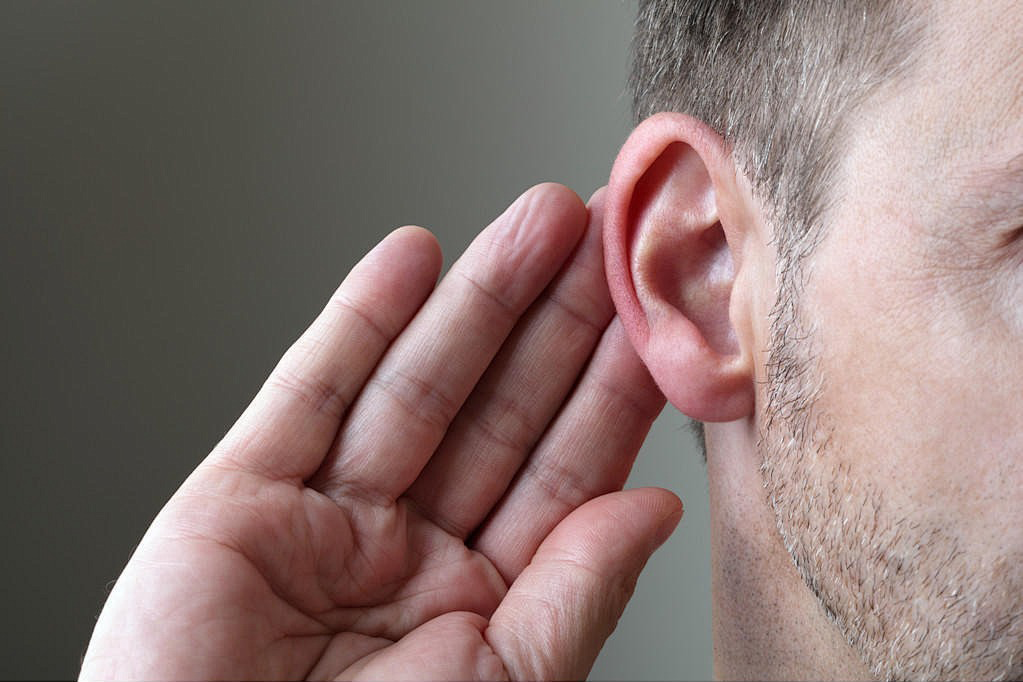“People don’t think there’s anything wrong with wearing framed glasses. Sometimes they even regard them as a kind of personalized accessories. However, if one wears a hearing aid, the wearer may be considered to have a hearing disability. In fact, as people age, it is quite normal for middle-aged and elderly people to have varying degrees of hearing loss.”
During the Beijing International Audiology Conference held this year, Fang Fang, Vice President of Sonova and General Manager of the Chinese Region, believes that people’s cognitive biases regarding hearing loss (hereinafter referred to as “hearing impairment”) and hearing aid products have restricted the “early intervention” of people with hearing loss.
In an interview with Yicai, she said that with the deepening of global aging, the proportion of people with age-related hearing loss is increasing rapidly. Early intervention for the hearing loss status of such groups can slow down the progress of hearing loss as well as the occurrence of cognitive disorders, Alzheimer’s disease and other ailments.
According to the relevant report released by the World Health Organization (WHO) in 2021, the number of people aged 60 and above with hearing loss worldwide has exceeded 65%. Age-related hearing loss is the third most common geriatric disease in the world after arthritis and hypertension. Similarly, the incidence rate of hearing loss among the elderly in Chinese communities also ranges from 52.70% to 80.00%.
Age-related hearing loss cannot be cured by drugs or surgery. Theoretically, hearing aids should be the most commonly used intervention method. However, contrary to the large number of potential users, there is still a significant gap in China’s hearing aid market. The view in the industry is that the domestic understanding of the susceptibility and severity of age-related hearing loss is insufficient, and there is a shortage of hearing aid dispensers. Multiple reasons jointly lead to the insufficiency of the accessibility and affordability of hearing aid services for patients with mild and moderate hearing loss in China. Recently, the OTC/self-fitting hearing aids emerging in domestic and foreign markets have more accessible prices and services, especially playing a promoting role in popularizing hearing aids among the elderly with mild and moderate hearing loss. However, they are still in the initial stage, and the access thresholds and regulatory norms remain to be perfected.
Data provided by Wan Min, President of the Beijing Hearing Association, during the aforementioned conference showed that on average, it takes 6 to 7 years for people to start using hearing aids from the time they notice a decline in their hearing.
The lack of awareness and accessibility of hearing aids has far-reaching consequences. Many elderly individuals with hearing loss may experience social isolation. They may find it difficult to communicate effectively with family members, friends, and in social settings. This can lead to feelings of loneliness and depression, which in turn can have a negative impact on their overall well-being and quality of life.
Moreover, the delay in using hearing aids can also affect cognitive function. Research has shown that untreated hearing loss is associated with an increased risk of cognitive decline and dementia. When the brain is deprived of auditory stimuli due to hearing impairment, it may have to work harder to process information, which can over time lead to a weakening of cognitive abilities.
To address these issues, efforts need to be made on multiple fronts. Firstly, public education campaigns are crucial. These campaigns should aim to raise awareness about the prevalence and consequences of age-related hearing loss. They can use various media channels such as television, radio, and social media to inform the public that hearing loss is a common condition that can be effectively managed with the help of hearing aids. For example, creating public service announcements that feature real-life stories of individuals who have benefited from using hearing aids can help to reduce the stigma associated with them.
Secondly, improving the training and availability of hearing aid dispensers is essential. There should be more comprehensive and standardized training programs to ensure that dispensers have the necessary skills and knowledge to accurately assess the hearing needs of patients and provide appropriate fittings. Additionally, increasing the number of dispensers, especially in rural and underserved areas, can make it more convenient for people to access professional hearing aid services.
In the area of technology, continuous innovation in hearing aid design is also needed. Manufacturers should strive to develop more advanced and user-friendly hearing aids. For instance, some modern hearing aids are now equipped with features like Bluetooth connectivity, which allows users to stream audio from their mobile devices directly to the hearing aids. This not only enhances the listening experience but also makes the hearing aids more appealing to tech-savvy consumers. There could also be more research into developing hearing aids that can automatically adjust to different listening environments, such as noisy restaurants or quiet libraries, without the need for manual adjustments by the user.
Another aspect that requires attention is the affordability of hearing aids. While the emergence of OTC/self-fitting hearing aids has made them more accessible in terms of price, there is still room for improvement. Insurance companies could be encouraged to provide better coverage for hearing aids. Governments could also consider providing subsidies or tax incentives for the purchase of hearing aids, especially for low-income individuals. This would help to reduce the financial burden on those who need hearing aids but may have difficulty affording them.
In terms of research, more studies are needed to better understand the mechanisms underlying age-related hearing loss. This could potentially lead to the development of new treatment methods or preventive strategies. For example, research into the role of nutrition and lifestyle factors in hearing health could provide valuable insights. It may be discovered that certain nutrients or a healthy lifestyle, such as regular exercise and a balanced diet, can help to slow down the progression of hearing loss.
Furthermore, the integration of hearing health into primary health care is an important step. General practitioners should be trained to screen for hearing loss during routine check-ups. They can use simple screening tools to identify patients who may have hearing problems and refer them to specialist audiologists or hearing aid dispensers for further evaluation and treatment. This would ensure that hearing loss is detected at an earlier stage and appropriate interventions can be initiated promptly.
The development of tele-audiology services is also a promising trend. With the help of telecommunication technology, patients can have remote consultations with audiologists. This can be particularly beneficial for those who live in remote areas or have difficulty traveling to a clinic. Audiologists can remotely adjust the settings of hearing aids, provide advice on hearing care, and monitor the progress of patients. In the context of an aging society, the issue of age-related hearing loss and the accessibility of hearing aids is not only a matter of individual health but also a social and economic concern. By addressing the cognitive biases, improving awareness, enhancing technology, ensuring affordability, and strengthening the healthcare infrastructure related to hearing loss, we can improve the quality of life of millions of elderly individuals and potentially reduce the burden on society associated with the consequences of untreated hearing loss.
We also need to consider the role of caregivers and family members. They can play a significant role in encouraging elderly relatives with hearing loss to seek help and use hearing aids. They can provide support during the process of getting used to wearing hearing aids and help with communication strategies. For example, learning to speak clearly and face the person with hearing loss when speaking can greatly improve communication effectiveness.
The design of hearing aids should also take into account the ergonomics and comfort of the users. Elderly people may have more sensitive skin or dexterity issues, so the materials used and the shape of the hearing aids should be carefully designed to avoid causing discomfort or difficulty in handling. Additionally, the battery life and ease of battery replacement are important factors. Long-lasting batteries or rechargeable options can make the use of hearing aids more convenient for the elderly.
In the area of rehabilitation, there should be more programs available to help hearing aid users improve their listening and communication skills. These programs can include auditory training exercises, speech therapy, and group communication activities. By participating in these programs, users can better adapt to their hearing aids and regain confidence in their communication abilities.
The development of smart hearing aids that can interact with other smart devices in the home, such as smart speakers or home automation systems, is another area of potential growth. This would create a more seamless and integrated living environment for the elderly with hearing loss, allowing them to control various devices and access information more easily.
Finally, international cooperation and sharing of best practices in the field of hearing loss prevention and treatment can accelerate progress. Different countries may have different experiences and solutions in dealing with age-related hearing loss. By collaborating and learning from each other, we can develop more effective global strategies to address this common health issue. In conclusion, the complex problem of age-related hearing loss and the associated challenges in the use and accessibility of hearing aids require a comprehensive and coordinated approach from all sectors of society to ensure that the elderly population can enjoy better hearing health and a higher quality of life.




